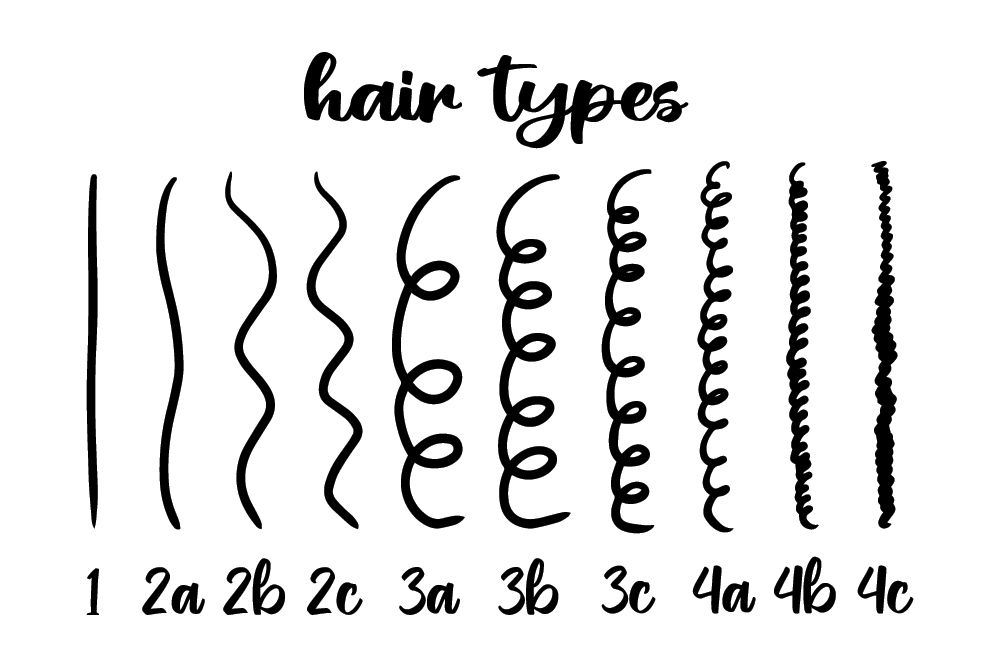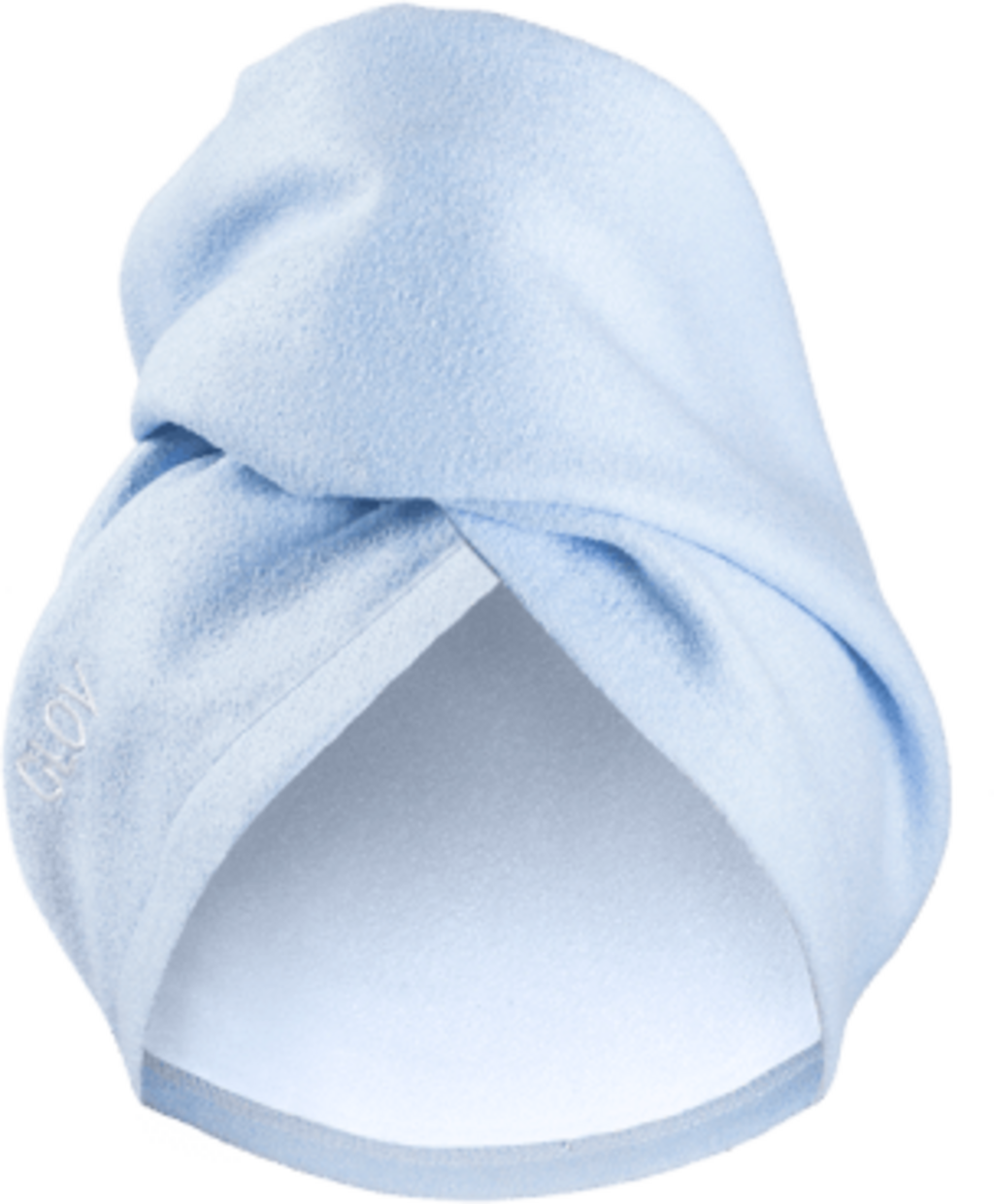Co-Washing & Squish to Condish
The hair care routine for curly textures
Bring out the beauty of your curls - with the co-washing and Squish to Condish (STC) methods.
Have you ever heard of the Curly Girl Method (CGM)? If you have curly hair, you have certainly stumbled across the term. We summed up interesting facts and techniques in a blog post about it, which gives you an overview of this grooming method. One of the most important pillars of CGM is knowing your curl type and being mindful of avoiding numerous harmful substances that can be found in cosmetics.
This brings us to the real, and most important issue: if you have curly hair, it is advised to avoid the use of shampoo. Instead, it is recommended to replace shampoo with a conditioner or co-wash. The latter offers the best of both worlds: it gently cleanses and conditions the hair at the same time, and is CGM-compatible. This means that the product is formulated with "clean" ingredients from a CGM's point of view. Co-washing refers to cleansing the hair with a conditioner which is milder on the tresses - avoiding sulphates altogether.
Shampoos often contain harmful substances, like harsh surfactants, that do a really good job of stripping the hair of its natural oils. They can damage the hair fibres and are more aggressive on the scalp and the hair. Curly hair textures have a unique structure and require extra special care to retain a shiny, healthy and bouncy appearance. Co-washing curly hair types is the gentler way of ensuring your curls look their best.
What are the advantages?
Curls and frizzy hair are naturally drier than straight hair. The structure of the hair results in the natural oils produced by the scalp taking much longer to make their way to the lengths of the hair. Using shampoo to cleanse curly hair means that the hair and scalp will continue to look dry and may even lead to itchiness.
The advantages of co-washing:
- The moisture balance of the scalp and hair remains intact.
- Increased shine and less frizz formation.
- More defined curls.
- Renewed suppleness, less hair breakage and improved hair manageability.
Who can benefit from the STC method?
It is best if you know your curl pattern and hair type in order to optimally care for your hair.
Squish to Condish and co-washing methods are basically suitable for almost all hair types - starting from thick, to dry and porous hair. These techniques provide the hair with intensive moisture and cleanse the tresses without causing dehydration.
The methods are not necessarily ideal for oily hair types because the excess oil is not removed resulting in an oily-looking appearance. Co-washing is strongly discouraged for damaged and brittle hair. Conditioners are formulated to soften the hair fibres which is not beneficial for weaker hair types. Instead, opt for special products with ingredients that are known to repair the hair.
Are you familiar with your curl type?
Perhaps, you have come across terms, such as 2c or 3b curls? These terms refer to the different curly hair categories - and, there are several of them. They range from 2a, describing gentle waves, to 4c, which refers to coily textures. The categories are beautifully illustrated down below:

Can't find your unique curl pattern? Don't fret, most people have a mix of 2 or more curly hair types.
How does co-washing work?
Co-washing refers to using co-washes or sulphate, silicone-free and lighter conditioners to cleanse the hair. The former may contain mild detergents/surfactants but are considerably gentler than those in a shampoo, making them more similar to a conditioner in terms of product type. Conditioners, on the other hand, usually do not contain surfactants, but this also makes them less effective at cleansing.
It is not recommended to use hair masks or intensive hair treatments for co-washing. These products are too heavy and not suitable for use several times a week.
Assuming you've found the perfect conditioner for your hair, wet your hair, rinse once, and then distribute the co-wash or conditioner through the hair. The amount of product needed depends on the length of the hair and how rich the formula is. Massage the conditioner through the hair for about 5 minutes - from the roots to the ends - about the same way you would a shampoo.
The massaging motions gently cleanse the hair - the product will pick up the dirt particles attached to the hair and the scalp. Leave the conditioner on for a few more minutes before rinsing thoroughly.
This process can be repeated if needed.
Occasionally, a more intensive cleanse can be performed: a weekly scrub or cleansing with a shampoo and conditioner every 2 weeks is a good change of pace depending on your hair type.
It is recommended to "clarify" the hair once in a while. Product buildup can lead to dullness, itchiness or even flakiness, and the co-washing method might not have the same, usual effect. Clarifying the hair can fix this. To do so, clarify the hair using a CGM-complaint or clarifier shampoo.
Alternatively, use a mixture of water and organic apple cider vinegar to clarify the hair, remove product buildup and cleanse the scalp and hair. This solution supplies the hair with nutrients that provide a healthy-looking appearance.
The Squish to Condish technique
Essentially, the technique refers to squishing the conditioner into the hair with water. This provides intense moisture while defining the curls at the same time.
To do this, use your usual conditioner or co-wash. A small amount is usually sufficient. With a little practice, you will quickly find out how much conditioner you actually need.
The STC method is performed on freshly washed, detangled hair. Distribute a small amount of conditioner through wet hair.
Tilt your head forward and let your hair hang down. It should still be wet and feel like seaweed - what's known as "seaweed hair": thick, wet strands that are soft and squishy. If it's not, add some conditioner.
Now, cup your hands to catch some water from the shower.
Place your hair in your cupped hands and gently knead the water in an upside-down position from the bottom upwards. Move the hands in light, pulsing motions to knead the water onto the hair. You will hear a squishing sound when doing so.
Continue with these motions on the sides, back and front of the head.
If there is still frizz or tangles, repeat the technique.
The method is complete when the hair is no longer dripping with water and appears defined with no frizz in sight.
If not, experiment with a little more water or less/more conditioner until you are happy with the result.
This method does not require the conditioner to be rinsed. This technique allows for even distribution of the conditioner whilst binding and defining individual strands of hair.
Follow up with a curl-enhancing gel. A leave-in hair care product is no longer needed.
Finally, allow the curls to dry naturally or use the plopping technique. Drying the hair naturally after using the STC may take a bit longer than usual due to the excess amount of water that is worked into the hair. The curls will, however, appear more defined and less frizzy, and as a result, less voluminous.
Notes:
Clarifying the hair has not improved its structure and appearance? Then the products used are possibly too heavy for your hair type, or the hair needs time to adjust to the formulas used for co-washing. The hair may need a few weeks to become accustomed to the switch from shampoo to co-washing products. Investing in these methods and products, however, is worth it in the end.
It is also important to note that the hair shouldn't be clarified too frequently. Doing so may cause damage.
Related products
-
 4.1 (28)
4.1 (28)GLOV Hair Wrap, Blue
- Blue
- White
- Cheetah
- Fine microfibres
- Shortens hair drying
- Protects the structure of the hair
CHF 18.90Delivery by April 25
-
 3.9 (7)
3.9 (7)Gyada Cosmetics Modelling Curls Co-Wash, 200 ml
- For curly hair
- Gives soft & silky lengths
- Balances the pH
CHF 17.00 (CHF 85.00 / l)Delivery by April 25
-
 3.0 (3)
3.0 (3)Rasayana Kamya Co-Wash, 200 ml
- For curls & all hair types
- With restructuring proteins
- Moisturises
CHF 15.10 (CHF 75.50 / l)Delivery by April 25
-
 CHF 15.10 (CHF 75.50 / l)
CHF 15.10 (CHF 75.50 / l)Delivery by April 25


